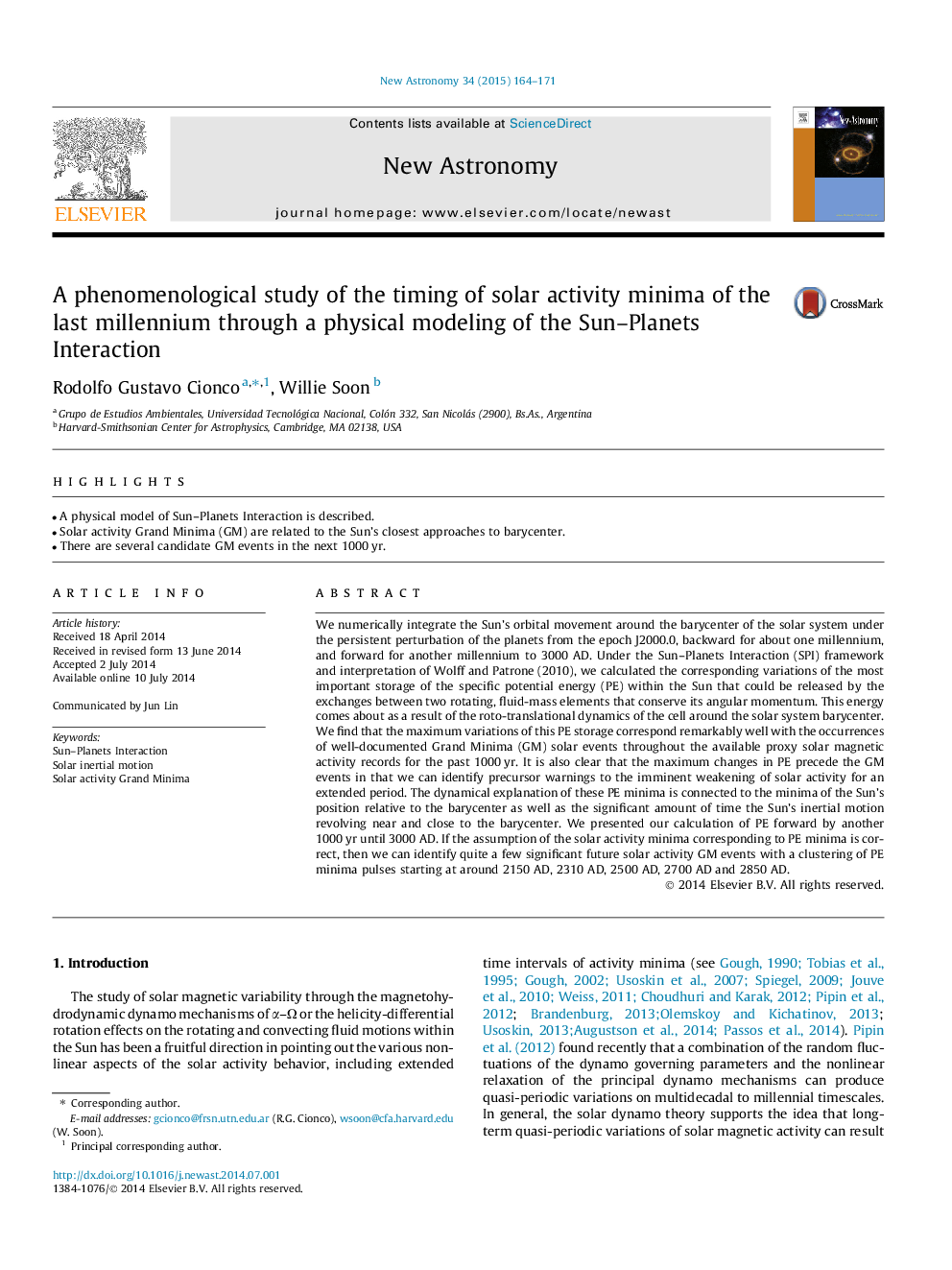| Article ID | Journal | Published Year | Pages | File Type |
|---|---|---|---|---|
| 1778972 | New Astronomy | 2015 | 8 Pages |
•A physical model of Sun–Planets Interaction is described.•Solar activity Grand Minima (GM) are related to the Sun’s closest approaches to barycenter.•There are several candidate GM events in the next 1000 yr.
We numerically integrate the Sun’s orbital movement around the barycenter of the solar system under the persistent perturbation of the planets from the epoch J2000.0, backward for about one millennium, and forward for another millennium to 3000 AD. Under the Sun–Planets Interaction (SPI) framework and interpretation of Wolff and Patrone (2010), we calculated the corresponding variations of the most important storage of the specific potential energy (PE) within the Sun that could be released by the exchanges between two rotating, fluid-mass elements that conserve its angular momentum. This energy comes about as a result of the roto-translational dynamics of the cell around the solar system barycenter. We find that the maximum variations of this PE storage correspond remarkably well with the occurrences of well-documented Grand Minima (GM) solar events throughout the available proxy solar magnetic activity records for the past 1000 yr. It is also clear that the maximum changes in PE precede the GM events in that we can identify precursor warnings to the imminent weakening of solar activity for an extended period. The dynamical explanation of these PE minima is connected to the minima of the Sun’s position relative to the barycenter as well as the significant amount of time the Sun’s inertial motion revolving near and close to the barycenter. We presented our calculation of PE forward by another 1000 yr until 3000 AD. If the assumption of the solar activity minima corresponding to PE minima is correct, then we can identify quite a few significant future solar activity GM events with a clustering of PE minima pulses starting at around 2150 AD, 2310 AD, 2500 AD, 2700 AD and 2850 AD.
